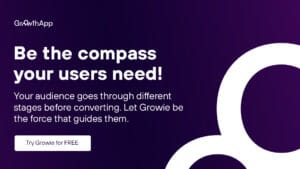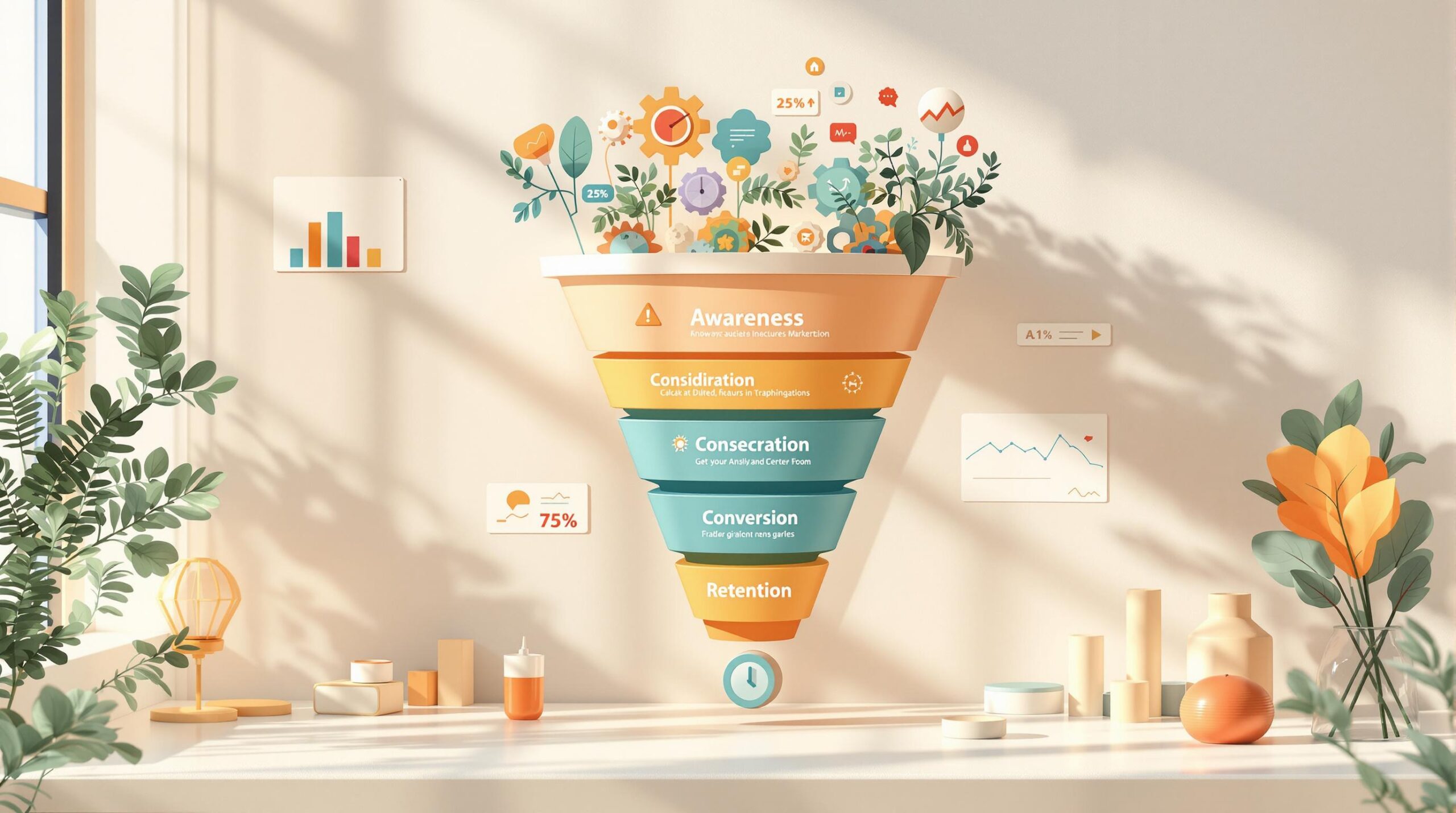Did you know that roughly half of marketers are burning through 15 hours every week just to create content? That’s 2–3 hours a day, day in and day out. And for those diving into long-form blogs or videos, it could easily top 20 hours—around 4 hours a day, every week.
Now, imagine investing all that time, only to watch your content get minimal results. You’ve put in the work—so why does it feel like you missed something crucial?
Here’s the hard truth: Content creation is a massive time investment. It is back-breaking hours spent on research, trying to find the right hook, developing the right messaging that speaks to your audience, editing, content distribution and all that
And if you’re not being strategic, all those hours are going to be painfully wasted. To truly maximize your efforts, you need to craft content that grabs your audience’s attention—and holds it down like a sledgehammer. In this article, we’ll break down what a content conversion funnel is, why it’s vital to your business, the key elements of a content conversion funnel, and how it can transform your results.
Understanding the Content Conversion Funnel
Remember the excitement of sliding down a playground slide as a kid? You’d be giddy with anticipation, only to get stuck halfway.
Suddenly, that thrill turns into a panic attack. You’re hyperventilating, desperately thinking, “I need out!”
This description might look over the top but imagine this as your user’s experience. If navigating your conversion process feels anything like getting stuck on that slide, you’re losing them.
This is where the content conversion funnel comes in.
A content conversion funnel is the journey that guides potential customers from casually reading your content to converting—and ultimately becoming loyal, repeat buyers.
It’s the step-by-step process on your lead funnel website that takes your audience from awareness to action.
Understanding how it works is crucial. It gives you the roadmap for how customers will interact with your business at every stage, helping you make their journey smoother, more intuitive, and far less frustrating.
What are the content marketing funnel stages?
Your content conversion funnel is made up of three fundamental stages namely; Top of Funnel, Middle of Funnel and Bottom of Funnel
1. Top of Funnel (ToFu)
The Top of Funnel is where it all begins—the first impression, the first interaction. This is where your audience is “problem-aware” but not yet sure how to solve it.
To hook them in, you need content that answers the big “what” questions.
This stage is all about building awareness and drawing potential customers in with content that speaks directly to their needs and pain points.
Think of blog posts, infographics, social media content, and SEO articles—all valuable pieces that get visitors curious about what you offer.
2. Middle of Funnel (MoFu)
Now that you’ve caught their attention, it’s time to deepen the connection.
MoFu content isn’t about pushing—it’s about nurturing.
You want to build trust, keep their interest alive, and help them move closer to a decision. It’s where you provide real value that answers the “how” and “why.”
You’re guiding them along the journey with content like case studies, webinars, in-depth guides, and comparison charts.
The goal here is to engage, educate, and nurture leads, so they’re ready to take the next step.
3. Bottom of Funnel (BoFu)
By the time your audience hits the Bottom of Funnel, they’ve already interacted with your brand, received value, and are seriously considering a purchase.
But here’s the thing—this is where they need that final push.
BoFu content is all about conversion—helping customers overcome their last doubts and reaffirming that choosing your product or service is the right move.
Whether it’s through testimonials, product demos, free trials, or special offers, this content reassures them that they’re making the best decision.
Key elements of an effective content conversion funnel
1. Cohesive storytelling
Storytelling in marketing has evolved to be more than just a tool—it’s a powerful strategy that connects brands with their audiences on an emotional and authentic level.
As one of the world’s top marketers, Seth Godin, put it, “Marketing is no longer about the stuff you make; it’s about the stories you tell.”
This insight highlights how marketing is shifting from a focus on features and functionality to a focus on creating meaningful connections.
The beauty of storytelling lies in its ability to captivate and resonate. A story can bring abstract concepts to life and humanize a brand.
It doesn’t need to be fictional, either; the best stories often come from real-life experiences, customer success stories, or even the shared aspirations and challenges of the target audience.
For a content conversion funnel, storytelling provides cohesion across all stages.
At the top of the funnel (ToFu), storytelling is used to draw people in by acknowledging shared problems or sparking curiosity. In the middle (MoFu), it deepens engagement by addressing challenges and showing solutions, while at the bottom (BoFu), storytelling can remove last-minute hesitations, building trust through testimonials or case studies that show real success.
Ultimately, storytelling is essential in marketing because it doesn’t just tell people what to buy—it shows them why a product matters, inspiring action that feels natural and aligned with their values.
2. Targeted Content Creation
Targeted Content Creation starts with the foundation: defining audience personas for each stage of the funnel.
Dive deep into creating detailed personas that reflect the unique needs at each stage—TOFU, MOFU, and BOFU.
For example, a top-of-funnel persona is someone who’s just beginning to recognize a problem, while a bottom-of-funnel persona is ready to buy—they’re primed and almost there.
Understand their pain points, the questions they’re asking, and the types of content that speak to them. Every piece of content should be carefully aligned with a specific stage to meet them where they are.
Another key thing to include in your targeted content creation is repurposing content for maximum impact across various channels, ensuring consistency in your message.
Turn a blog post into a compelling infographic for social media, or transform a case study into a powerful video testimonial.
This way, you meet your audience with content in the formats they love, boosting engagement and, ultimately, conversion rates.
Personalize the content experience by using insights from your CRM, email marketing, or analytics tools.
Using an AI CRO tool is the absolute game changer in personalization.
With insights obtained from your analytical tool, Growie, an Ai powered cro tool, tailors your content to reflect user behavior and create a seamless, personalized journey that speaks directly to each individual.
3. Calls to Action (CTAs)
The power of CTAs in guiding users through the funnel cannot be overstated—they’re the key to your content conversion strategy.
Your CTAs should match the intent of each stage of the funnel, gently nudging your audience toward the next step.
At TOFU, CTAs like “Learn More” or “Explore Our Blog”—low-pressure prompts are designed to spark curiosity and keep them engaged without pushing for a sale.
This is all about building trust and adding value to the relationship.
In the MOFU stage, your CTAs should be more substantial, encouraging users to dive deeper.
Phrases like “Download the Guide” or “Watch the Webinar” move them closer to understanding your solution, while subtly reinforcing the benefits of your offering.
Finally, BOFU CTAs are the ones that make the final push.
These are designed for immediate action—“Get a Free Trial”, “Book a Demo”, or “Start Now”—all action-driven phrases that urge users to make a decision.
The goal here is to ensure your CTAs are bold, clear, and focused on the value to the user, prompting them to take the next step.
What, then, are the benefits of a content conversion funnel?
1. Increased conversion rates
A rock-solid content conversion funnel isn’t just a guide—it’s the ultimate pathway that takes your leads from casual browsers to committed buyers.
It carefully serves the right information at the right moment, addressing their questions and concerns step-by-step.
This progressive education builds unshakable trust, making them hungry to convert when they hit the final decision stage.
But it doesn’t stop there—this funnel doesn’t waste time on the uninterested.
It filters out the noise, ensuring that only the most engaged, most qualified leads make it to the final stages.
This means you’re zeroing in on prospects who are ready to act—boosting your conversion rates like never before.
2. Improved customer retention
When customers feel truly valued and empowered, loyalty follows.
A smart funnel doesn’t end at the sale—it extends into post-purchase content like onboarding guides and product tutorials, ensuring that new customers not only understand but fully experience the value of your product.
This early, proactive support slashes churn rate and skyrockets satisfaction.
By continuously serving up relevant, engaging content—whether it’s how-to guides or expert industry tips—you keep your brand front and center.
Regular value-driven interactions strengthen the bond, encouraging repeat purchases and building lasting relationships.
Happy, informed customers aren’t just loyal—they become your brand advocates, spreading the word and bringing in new customers.
3. Enhanced marketing efficiency
An effective content funnel is your marketing team’s secret weapon.
It shifts you from shooting in the dark to targeting with precision—focusing on the biggest opportunities and making every resource count.
By segmenting your audience based on their stage in the buyer’s journey, you unleash content that hits right where it hurts—at the perfect moment.
But it doesn’t stop there. Funnels are data goldmines.
They reveal the raw truth of how leads move (or stumble) through each stage, showing exactly where engagement plummets and where conversions flatline.
Armed with this insight, you can tweak, refine, and dominate every step of the funnel, transforming weak spots into conversion engines.
The payoff? Unstoppable ROI.
Every ounce of time, effort, and budget is laser-focused on the prospects that are ready to buy, ensuring your marketing isn’t just effective—it’s a game-changer.
In Summary,
A content conversion funnel isn’t just a tactic—it’s a game-changer. By shaping every interaction with stage-specific content, marketing and product managers create an unstoppable flow that drives audiences from curiosity to commitment. Each strategic call-to-action pulls users deeper into a journey that’s tailored, seamless, and designed to convert.
But it doesn’t stop there. This funnel does more than bring in leads; it turns them into loyal customers. With every step, brands build trust, elevate engagement, and boost retention. And by zeroing in on high-quality leads, brands supercharge their marketing efficiency, armed with data insights that fuel smarter strategies and maximize ROI.



